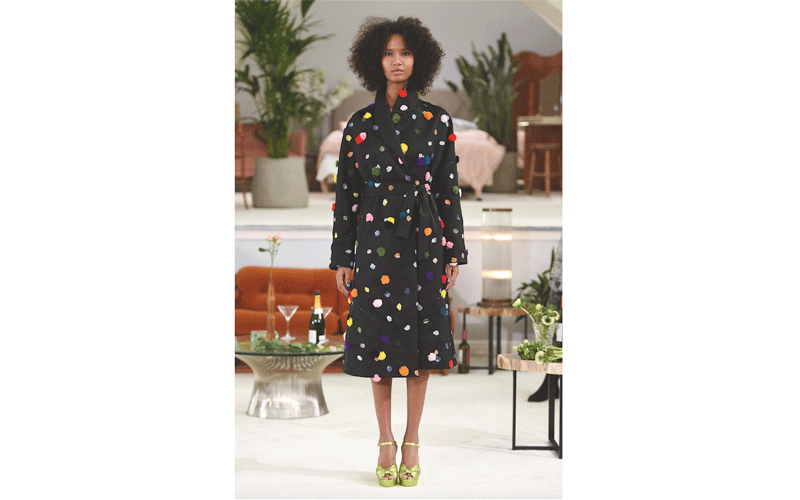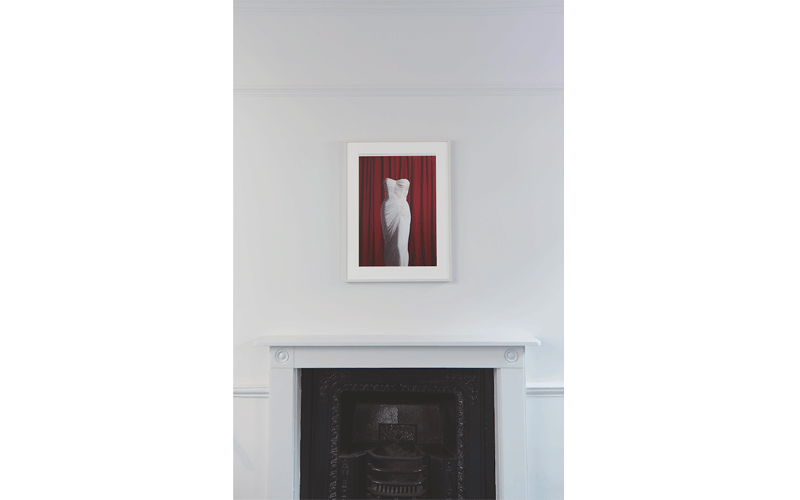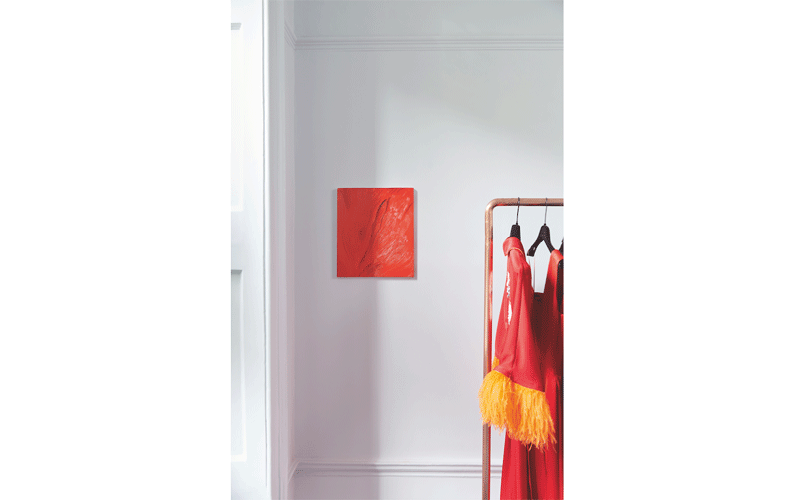If there’s any designer who knows women, it’s Osman. With the opening of his new boutique in London, he talks bohemian heritage, the universal appeal of Middle Eastern glamour and why he thinks influencers are here to stay.
Besides the fact that you were born and bred in Britain, how does the world of Osman coalesce with the world of London?
I was born in the second city of England, Birmingham, and left to come to London to study at the age of 18. The world of Osman and the world of London co-exist in their contradictions very harmoniously. London is an amazing place to find inspiration, from its myriad of cultures and cosmopolitan outlook, it inspires and touches me in lots of ways.
It’s been 10 years since you made your London Fashion Week debut. Where did you want the brand to go at that time versus where it is now?
Fashion is probably the hardest business in the world. If you operate purely on a creative level, you become an ‘ideas’ brand. At some point you need to be more commercial, and offer a product that has a wider appeal that works for many more people, and brings more people into the fold. I think the brand has grown bigger than I previously anticipated, and we have managed to add different layers of conversation around fashion, art, diversity and sustainability.

Tell us about the House of Osman’s design concept. Who does it appeal to?
The House of Osman is really an amalgamation of experiences: a bookshop, a space for fashion and a gallery space for exhibitions. The last one was in collaboration with the Fiorucci Art Trust, where Italian artist Milovan Farronato curated a show for our opening from Nicoletta Fiorucci’s collection of some young and established artists. And then the clothes take centre stage. It’s really like being in someone’s home.
Why did you pick Fitzrovia?
Fitzrovia has its own history of artists and writers. The Vorticism art movement (inspired by Cubism) in the early 20th century gave birth on this street. The area was also a hunting ground for the Bloomsbury set (writers Virginia Woolf, George Bernard Shaw along with Dylan Thomas) so it’s a perfect hybrid area for Osman with its bohemian heritage.

What part of your Afghan roots are sewed, so to speak, into your designs?
I think the exuberance, the fabrics and the cuts are very much part of my own heritage. I try to bring them into my work without it becoming too overtly ethnic. I definitely want to throw a new light on an Eastern aesthetic, fused with contemporary tailoring, yet still retaining a universal appeal.
What makes up the Arab aesthetic and how have you cultivated that in Osman?
I think the Middle Eastern aesthetic is a universal idea of glamour and beauty with touches of modesty. I think my clothes are never too revealing – they enhance women without objectifying them; my clothes help women feel like a better version of themselves. They are more powerful than anything else.
The world of Osman montage on your website includes some black and white film stills. Where does Hollywood glamour fit into the aesthetic of the brand?
I think ideas of female glamour are universal, and Hollywood has a universal appeal. I think glamour can be a very powerful expression of female beauty. I am mindful not to objectify women. My woman is always strong. The Arab woman is strong, contrary to popular belief – I knew this from my mum and other women I grew up with.
What do you think it is about London that resonates with Arabs as a definitive style capital over the other three?
I think London is such an international city with heritage, and it’s also a very tolerant city. It offers a dynamic culture and eco-system, and a space for creatives to flourish, wherever they are from. Many migrants have become successful here. It’s a true melting pot, and I think diversity, the tolerance against a background of heritage, resonates and allows anyone to be themselves.
You stock at The Modist and Ounass. What do you think gives these e-tailers an edge over other international fashion portals?
The language and styling of these e-tailers speaks to a local yet internationally-minded diaspora. Women’s needs are met with products that are in sync with the region’s lifestyle.

What was the best thing you were taught at Central Saint Martins?
The best thing was not to look at what anyone else was doing in class.
As you’ve developed over the years, who has been your main mentor?
There have been many mentors, from artists, teachers, my mum, my sisters, business people and other designers. You get different types of guidance from different people. I absorb it all.
What do you make of the rise in Arab influencers? Fleeting or here to stay?
I think there have always been influencers, or women who have inspired people and led the pack. But the speed at which we communicate and consume content demands instant gratification – all the time. We always look for ways to engage and be part of something. I think it’s here to stay but of course it has to be fine-tuned. Issues such as sustainability and diversity (whether paid or not) are at the forefront and needs to be communicated well. I think we are all naturally visual and curious people who search for things. Technology just makes it faster and easier for these messages to reach far. There will be influencers who adapt and develop their image into something long-term but then they’ll be a lot who will have their 15-minutes of fame.
How do you think influencers can better elevate brands in a more substantial way?
The right influencer can make your product accessible in a way that models can’t. Customers tend to visualise and associate themselves easier when they feel like they can attain it. An influencer offers a lifestyle extension to a brand, and can add another dimension to what a designer is doing.
– For more about Dubai’s lifestyle, news and fashion scene straight to your newsfeed, follow us on Facebook
Images:Supplied, Getty












